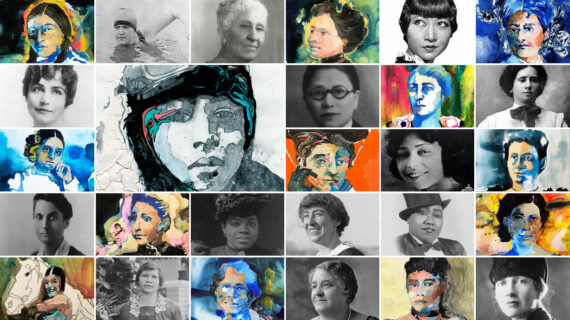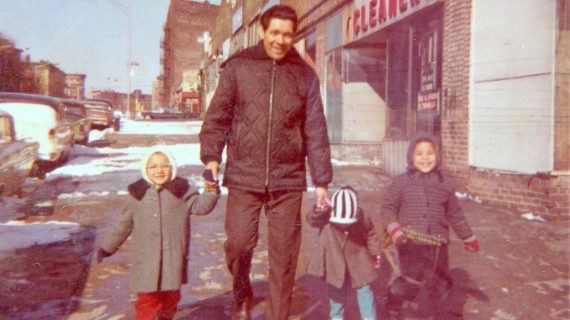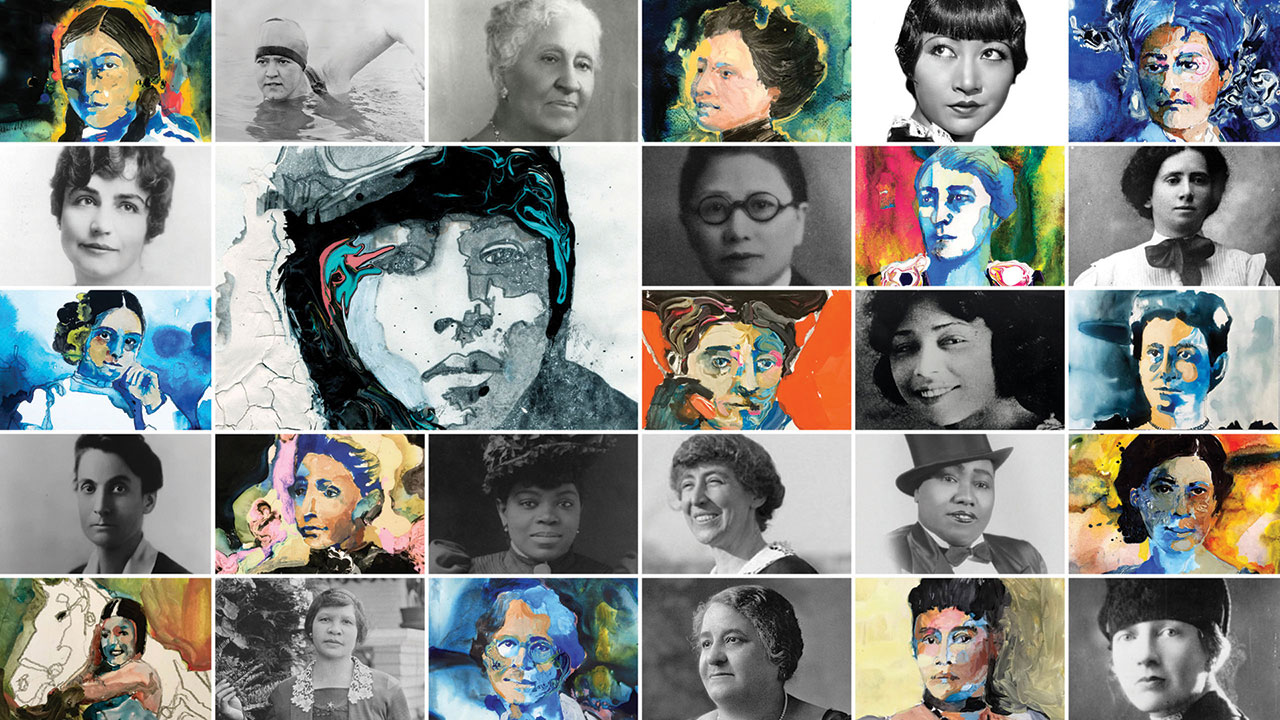Frederica Freyberg:
Well, as the old saying goes, the only poll that matters is Election Day, but that hasn’t stopped Americans from sitting on the edges of their seat waiting for each new pre-election poll to surface. One of the nation’s most respected pollsters conducts his surveys from the Marquette law school. Charles Franklin’s, final poll was released Wednesday. Charles, thanks very much for being here.
Charles Franklin:
Thanks for having me.
Frederica Freyberg:
I want to run through some of your results right away. The first one, your last poll before Tuesday's election, shows Barack Obama up 51% to 43% over Mitt Romney and has Tammy Baldwin up 47% over Tommy Thompson’s 43%. Now, one thing that’s getting some discussion is that in this poll 5% of the respondents, 5% more of the respondents, were Republicans than Democrats. Could that have affected these numbers?
Charles Franklin:
Yeah. It’s the other one around, 5% more Democrats than Republicans.
Frederica Freyberg:
Sorry.
Charles Franklin:
Well, of course the partisan balance is part of the story, but part of the story is how does the public feel about the parties? That number of Democrats has been at 34, 34, 31 and 34 in our last four polls. Republicans have been at 27, 28, 28 and 29. So the amount of movement from one poll to the next in the vote is a lot more than the amount of movement in the party. We’ve really only shifted by a couple of points from last time to this one, but we’ve gone from a one-point Obama lead to an eight-point Obama lead. So a seven-point shift in the vote with just a two-point shift in partisanship, something’s going on other than just the partisan makeup. But the partisan makeup of polling has become an intense point of partisan disagreement during the course of the fall, and I think ultimately we’ll just wait until Tuesday and we’ll see. But it is an area that’s been very much debated within the polling field this fall.
Frederica Freyberg:
Now, on those numbers that have both Democrats up in your final poll, you say that it narrows significantly if you measure voters who follow politics most closely, basically coming back to within the margin of error. What’s that about?
Charles Franklin:
That’s about voters who are sure they’re going to come out to vote, but say they’re not paying that much attention to elections and politics. When you exclude those people who are not that involved, though they say they’re sure they will vote, then that eight-point margin in the presidential race becomes just a two-point Obama margin, and the four-point Baldwin lead drops to just a one-point lead. What you’re seeing there is how important turnout is, and how important turnout specifically is among people who are leaning towards the Democrats but are not that involved. Even though they’re dedicated regular voters who say they’re sure they’re going to vote.
Frederica Freyberg:
Which would explain perhaps, why Barack Obama is in the state of Wisconsin three times in five days, two of those times in heavily Democratic areas.
Charles Franklin:
It’s very much about making sure you turn out the vote and especially of these marginal voters who just maybe might not show up on Election Day. With the visits that he’s making, that rally-effect is surely something they’re pushing very hard for, especially in Milwaukee and Madison, where you’re talking to the base of voters, and with young voters who are not as much interested in politics as many others. It’s important to point out that Republicans are also pointing out their get out the vote efforts, and saying they’ve refined them and really improved them during the recall election and that that will boost their turnout. So we have the polling. The numbers say what they say. But the unknown here is will either party turn out to have a bigger advantage in getting people to the polls.
Frederica Freyberg:
This is fascinating. I have to lot more screens I want to get through. The next one that stands out, the negative nature of the U.S. Senate race in Wisconsin between Tommy Thompson and Tammy Baldwin has apparently left its mark, as you can see by these favorables and unfavorables. Not only that, the message in the negative ads seemed to have stuck. What do you make of these really high unfavorables?
Charles Franklin:
This is the consequence of a negative campaign. We’ve seen it many times. You end up with both candidates being viewed more unfavorably than favorably, but one of them is likely to win. And that’s the impact of when you go negative against your opponent, you hurt their image, but you also hurt your own. So both candidates have suffered from it. But the messages they’ve sent have also stuck.
Frederica Freyberg:
Now the next results that we put up seem to say a lot about the Democrats’ messaging. We reported from the convention that every other word in their message was about the middle class. To the question does the candidate care about people like me, you found, among your respondents that 61% said that describes Barack Obama, whereas only 44% said that describes Mitt Romney, with 52% saying that doesn’t describe Romney. Any finer points on this?
Charles Franklin:
Yeah. That’s an area where Romney improved his standing after the first debate. We saw some significant movement in saying that he did care about the people like you. But that’s fallen off a little bit in the two weeks since the first debate and in the course of the other two debates. Obama’s been quite stable on that.
Frederica Freyberg:
Two more things we wanted to get to. One, that of Medicare. You found that, in Wisconsin among your respondents, 64% said Medicare should stay as it is, while 28% said it should become a program where seniors get a fixed amount of money to purchase health care. But oddly, I mean, that’s a big number, but your very next question said, but should there be changes to Medicare, and 52% said there should be.
Charles Franklin:
This is a perfect example of a very popular program. People want to maintain it the way it is. But they are very skeptical, 52% anyway, are skeptical that we can continue to do that. And of course the irony is, some of the people that want to maintain it, also say but it can’t continue the way it is. One of the great political issues no matter who wins the presidency this coming year is going to be that problem between those two things, what you want and what you think you can pay for.
Frederica Freyberg:
Now, the next screen, the last one that we’re going to put up. We looked at, because it really doesn’t seem to square with the constitutional amendment that Wisconsin passed banning gay marriage and civil unions, because your results found that 44% of respondents believe gay couples should be allowed to legally marry and 29% believe they should be allowed to form civil unions. So this is just a shift in people’s opinions.
Charles Franklin:
If you look at national data on opinion about gay marriage, support for gay marriage has been growing steadily for a number of years, but has been growing very rapidly over the last five or six years since we passed our amendment, in fact. And that’s an effect that is especially strong among younger people, but it’s working its way through the older population as well. This is an evolving issue, and we’re seeing it evolve here in the state as it has elsewhere.
Frederica Freyberg:
Fascinating stuff. Charles Franklin, thanks very much.
Charles Franklin:
Thank you.
Search Episodes
Related Stories from PBS Wisconsin's Blog

Donate to sign up. Activate and sign in to Passport. It's that easy to help PBS Wisconsin serve your community through media that educates, inspires, and entertains.
Make your membership gift today
Only for new users: Activate Passport using your code or email address
Already a member?
Look up my account
Need some help? Go to FAQ or visit PBS Passport Help
Need help accessing PBS Wisconsin anywhere?

Online Access | Platform & Device Access | Cable or Satellite Access | Over-The-Air Access
Visit Access Guide
Need help accessing PBS Wisconsin anywhere?

Visit Our
Live TV Access Guide
Online AccessPlatform & Device Access
Cable or Satellite Access
Over-The-Air Access
Visit Access Guide
 Passport
Passport












Follow Us